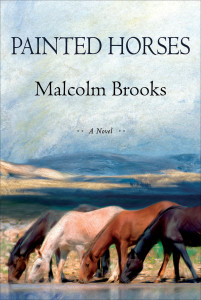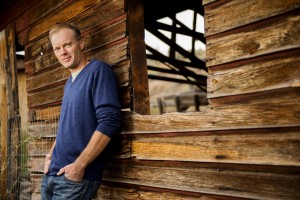By Amber E. Box
Malcolm Brooks is the author of “Painted Horses,” a story of love and progression in the Western U.S. during the mid-1950s. Brooks, a carpenter by trade, has spent most of the last 20 years in Montana. He is inspired by its pristine wilderness in both books and reality.
Brooks’ debut novel, “Painted Horses,” was recently named one of Amazon’s Best Books of August 2014. He is currently on tour for “Painted Horses.” You can find more information on the author, the book and tour dates here.
Have you always written?
First and foremost, I was an early and voracious reader. In junior high, my buddies and I decided to write adventure stories starring the bunch of us, for our own amusement. Within a week everyone had quit except me. I still haven’t.
What’s your process in developing your storyline and characters?
I tend to brood on a project for a long time before I start the actual writing. I might make notes on character or backstory or plot in a sort of impressionistic way, but I seem to require a more or less holographic view of the world I’m creating before I’m ready to commit to an actual narrative. I don’t totally know how I develop characters, except to note I’ve always been a good listener, and a good observer of people in general. Astrology can help, too – a Scorpio ain’t a Leo ain’t a Virgo.
What challenges do you face in your writing, and how do you overcome them?
For years my main challenges have been logistical – the endless battle of making a living and supporting a pair of energetic boys with the time it takes to write consistently and well. I just write when I can, and try to identify and prioritize and even create opportunities.
What has the road to publication been like for you?
In terms of publishing a novel, especially at this level, I’d say the road has mainly been long! I started to try to be serious about writing, with an eye toward something resembling this as an outcome, clear back in high school, and I was forty-one when “Painted Horses” sold. But in the interim I was publishing short stories and magazine essays and articles, so I did have some minor successes to keep me going.
 How do you market your work?
How do you market your work?
I came very late to social media, but I do have a Facebook account for the novel now that it’s in the world, and a web page I still haven’t actually learned to administer. And my publicists at Grove, Deb Seager and John Mark Boling, have been like magicians working behind the scenes, to the extent that I’ve had to do very little at least as far as the book goes other than keep them apprised of opportunities that come directly to me through bookstores or media outlets and so on. Otherwise, I try to identify and prioritize and take seriously any opportunity that comes my way, including interviews such as this.
Who are the writers that have inspired you most, and how have they inspired you?
I’ve always been pretty taken with writers who seize life in a big way, and have passions and enthusiasms outside of letters that inevitably end up informing the work on the page. Hemingway and Faulkner and even Teddy Roosevelt would be obvious classical examples, but also people like Thomas McGuane and Karen Blixen and Ted Hughes, or my friend Stephen Bodio in New Mexico, who is about as close to an old-fashioned Renaissance man as probably exists any more.
If you could keep just three books in your library, which would you choose and why?
Three?! I hope I never have to face this in reality, but here’s what strikes me at the moment. “The First Forty-nine Stories” by Hemingway, because it’s a pile of writing and contains a bit of everything that made him such an archetype; “Legends of the Fall,” by Jim Harrison, because it comprises three wildly different yet equally terrific novellas; and “Sexual Personae,” by Camille Paglia, because the introduction remains in my opinion a wrecking ball of scintillating thinking, and because the remainder of the book is like a Silk Road excursion through the highpoints of western art and culture.
Category:
